
MY LIFE AS A SOUND DESIGNER
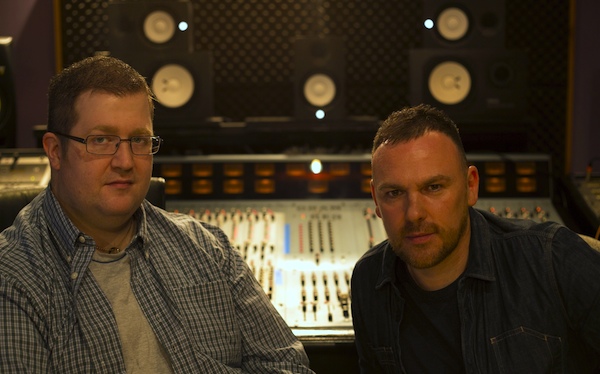
Pro Sound Effects has started its own How I Work series inspired by Lifehacker’s series (of the same name), featuring interviews with professional sound designers who subscribed to the company’s Hybrid Library.
So far, four interviews have been conducted for the series, including Matt Piersall – game sound designer from G133K Works, Austin, Texas; Will Morton – game sound designer from Solid Audioworks, Edinburgh, Scotland; Andrew Lackey – sound designer from Wabi Sabi Soundworks, Atlanta, Georgia and Michael O’Connor – a freelance sound designer from Los Angeles, Californi
We take a look at the best bits from all of the interviews, with tips and tricks to inspire you for your next project.

What is one thing you know now you wished you had known 5 years ago?
Matt Piersall: “I’m content with everything I’ve known at the time I’ve know it. Failure, success, and in general figuring stuff out is an important process in the life of an artist. If there is ONE thing I’d wished that I had figured out earlier is that it’s important to always be confident and to not get down on yourself. It simply slows down your life both creatively and personally.”
Will Morton: “Just how big the world of audio is when you go freelance. Being an in-house sound designer working on one series of games for the majority of your career means that you get focussed on one product for a long period of time, often years, before moving onto something else. Becoming a freelancer has been a true time of discovery.”
Michael O’Connor: “I wish I knew the importance of diversifying my clientele in order to help earn a living. After graduating college I began working mainly on independent narrative projects since I enjoyed the relaxed deadlines which enabled me to focus on my creative side and record nearly all of the material I was implementing (my first feature film consisted entirely of SFX from my own library minus a handful of SFX from other libraries). However, due to limited budgets, I worked a ton and could hardly make a living.
As my contacts grew I eventually branched out into the TV and commercial world (tighter deadlines w/ higher pay). I realised that striking the balance of commercial and narrative work has enabled me to both comfortably earn a living and work on projects where I don’t need to rush the creative process.”
Andrew Lackey: “I feel grateful for where I am and to wish to change the past would be a wish to be elsewhere. Also, I love challenges, and things I’m challenged by now will steer me to places 5 years from now that I could not imagine today.”
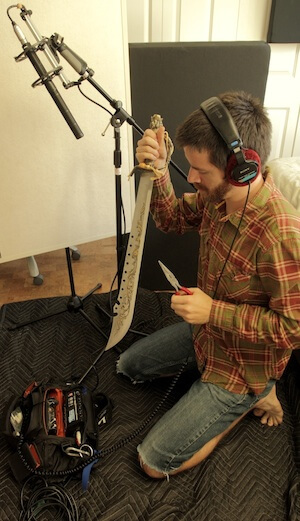
What software/hardware/gadgets can you not live without?
Michael: Software – “I couldn’t live without Soundminer HD Plus as I will typically have 3 hours to lay in 100–200 SFX for the television work I do. Izotope RX is magical (our review link).”
Gadgets – “The Sennheiser MKH60 + MKH30 microphones paired with my Sound Devices MixPre and Rode Blimp enable me to capture industry-standard audio with virtually no noise and with control over the stereo width in post. The microphones handle just about anything I throw at them, whether it’s soft wind blowing through trees to jumbo jets roaring by 100 yards away. The limiters on the MixPre are great at handling sudden loudness spikes without distorting the audio, and the blimp eliminates 99% of the wind I encounter.”
Andrew: “Microphones and some recording device. It’s my baseline. When I first started out my mentor, Dane Davis, had me running all over LA looking for crazy stuff to record. Also, my first roles on films with him were as a foley supervisor, editor, mixer. I learned the language of sound design by making things happen acoustically first.
Now, what 16 years later, I’m still doing the same thing, but I also have my own library I’ve amassed as a bonus. I take a recorder everywhere. If something catches my ear…I record it. I liken it to a chef having their own garden or looking around in the woods for mushrooms. You can’t help but create something unique when you start from scratch.”
Will: Software – “Toneboosters’ Barricade Pro limiter plugin. It is very much used in practically every session I work on. iZotope’s RX restoration suite, I’ve used this for years on many big projects. Whether for restoration or not every time I use RX it blows my mind without fail. Dialogue production is a large part of my work and RX makes things easier and faster. PSE’s Hybrid Library, I had a few libraries I had purchased myself over the years but most were very niche products, and even on my first project as a freelancer I found that I needed sounds I didn’t have. The Hybrid Library offered a ridiculous amount of sounds covering just about anything you could need, so it was a fantastic way of getting started as a freelancer without worrying about library-building.”
Gadgets – “Cockos’ Reaper DAW, one of the best things about Reaper is that you can go ridiculously deep with customization and automation of tasks. I have worked on projects where I managed more than 150,000 lines of dialogue, and Reaper made working with that amount of files very straightforward. My own laptop stand. I have a Vaio laptop which has really poor USB port placement, great laptop, but very poor design. I looked for a stand that would allow me to feed angled USB cables under the stand so I could have the ports tucked away at the back, [so] I designed and built one from wood in a few hours one afternoon. It’s perfect, and I couldn’t imagine using a laptop without it. I wish I had just done this first!”
Matt: Software – “I really like Maschine right now, I make tracks at home for fun. iPhone for Audible and Podcasts, I listen to a TON of audio books (iPhone is obvious but smart phones in general are amazing devices).”
Gadgets – “Push Controller, this is the best controller for Ableton, it’s also helped make my sound design WAY more performance based and less editing based. Steamer, I finally quit needing to iron, steamer is way easier to store and does less damage to your clothing.”
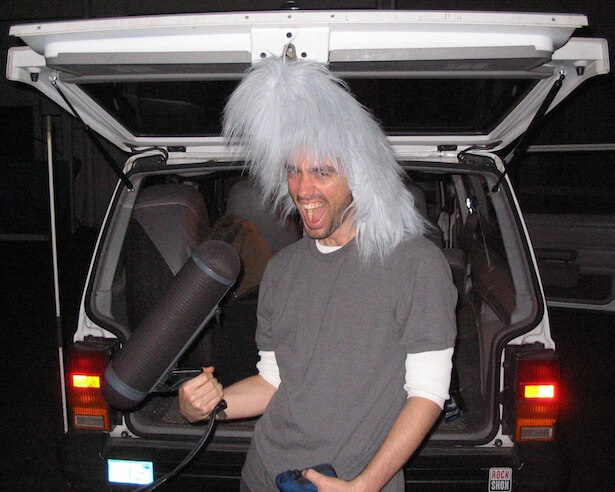
What’s your favourite time-saving shortcut/tool?
Will: “The very definition of time-saving to me is the incredibly flexible batch rendering function of Reaper.”
Matt: “I’d say the DrumRack in Ableton has been a huge shortcut. It’s quick, it’s already mapped to Push and you can drop sounds from your library directly in. If you need to record something it’s SUPER quick to get your live recording into the Drum Rack. Sequencing my sounds vs. editing has saved me a ton of time and it’s made it very speedy to create options and revisions.”
Andrew: “Nuendo is a beast of productivity shortcuts. Logical editing, insane automated exporting functions, etc.”
Michael: “Izotope’s RX3 Advanced audio restoration software, hands down. RX3 paid for itself within weeks after I purchased it by saving me dozens of hours of manually de-noising and de-clicking trashed production audio (my wrist hurts just thinking about the pre-RX3 days). The spectral repair is unbelievably precise when it comes to cleaning and repairing problematic dialogue. It’s also great for cleaning sound effects I’ve recorded in the field (ex. remove bird chirps from automobile recordings).” (our review link)

Where do you find inspiration for your sound design work?
Andrew: “The project itself. Every project starts as an endeavor to do something different, tell a new story or tell a well known story from a unique perspective. Even if a project is firmly rooted in a genre…take zombies for instance….there is always something that makes it different. After all, why make it? I feel our jobs as designers is to hone in on what that is and help the creative directors give the deepest experience we can around it.
Once you’ve honed in on WHY you’re making the sounds…not WHAT sounds to make…but WHY…you start to build a context (or an inspiration) for every future choice you make for the project. When you know WHY, suddenly you can focus. You can confidently peel away insignificant sounds, ideas or cliches that are only there because only WHAT was answered prior to your understanding. This is an evolving understanding throughout a project’s life cycle. In fact, often the film or game makers themselves haven’t fully figured out all of the WHYs by the time you start. I feel that’s why they’ve hired me….my ability to explore that with them and use my talents in sound design to make it happen.”
Michael: “I feel like when I was younger I was mainly inspired by many films, whereas these days my main inspiration comes from life experiences. I am constantly analyzing my sense of hearing and how I might replicate such feelings and moments with my sound design work. I believe that in order to explore new realms of sound design, one must find inspiration outside of the medium they contribute to.”
Matt: “Most inspiration is process based. I like changing how/where/when I do things. I try and live life first. Sound design is an amazing career and art form but there are things that are much more important. Realizing that in the end we’re just making video games frees me from being trapped by thinking my work is THE MOST IMPORTANT THING.
It’s not that you can’t fail. Just fail early and often. Always try things, they might not work but that’s okay. My sound design has become a zen state to me. I don’t think, I just do.”
Will: “When doing sound for picture, most of the time I can ‘hear’ the finished product in my head, how something should sound, and then I just recreate the sound in my studio. However, for creating new sounds just noodling with a synth or going to town on some field recordings or samples with some brutal effects plugins can trigger ideas that are inspiring and worth developing. You’ve got to get your hands dirty and experiment. There’s a lot more to sound design than simply creating new sounds though!”
WORKSPACES

Michael O’Connor:
- Mac Tower OS X 10.6.8 / Processor 2 x 2.8 GHz Quad-Core Intel Xeon / Memory 8GB Ram running ProTools 10 HD (review link).
- Peripherals consist of – A pair of Dynaudio BM5a mkII’s, with Apogee Duet 2, Avid Mojo, Tascam FW-1082, Wacom Intuos Pro medium tablet, Handshoe mouse.
- An IK Multimedia iRig Keys USB Keyboard Controller
- Apple Cinema Display as main monitor and Vizio 22” monitor mounted above for video.
- 11’x10’x8’ studio treated with ten 4’x2’x2” hand-built sound panels and Owens Corning 703.
- Two 4” thick bass traps that extend floor to ceiling in the back of the room, with 2” thick Auralex foam used for extra absorption.

Matt Piersall:
- LaCie – 2 TB project / SFX Drive
- Ableton Push and Apollo Twin (with extra DSP)
- Mac Pro 2014 Laptop (Dual Core i7 16 GB RAM)
- Dynaudio, SPL Surround Monitor Control, Sennheiser MKH 418 and Livid Block Controller
- Yoga Ball
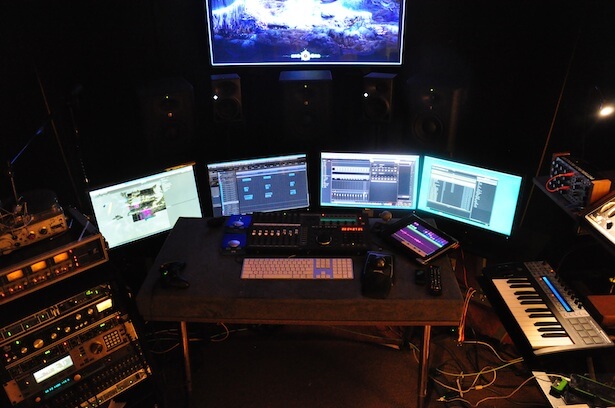
Andrew Lackey:
- 5.1 speaker setup: JBL 6328s, 2.1 speaker setup: Neumann KH 120s and dual M&K subs
- JLCooper mixing control surface & OSC controller for my iPad that control RME’s Totalmix.
- Mac with Nuendo for my DAW and Gaming PC for when I do game implementation and mixing…I literally have 6 video monitors (including one in our recording booth) hooked to this system.
- RME interfaces, Eventide Orville (Harmonizer & Special Effects Processor), Pittsburgh Modular–based Eurorack and Moog Taurus (basically the same as the Moog Rogue without the keyboard).
- A full Sound Devices 744t field kit with Sennheiser MKH8000 modular series mics with various shotgun, XY, and MS rigs, Neumann KM 140s, TLM 103s and probably 25 other lesser dynamics, condensers and specialty mics. And Hydrophones, contact mics, experimental stuff. When asked about my favourite sound design tool I say a microphone.
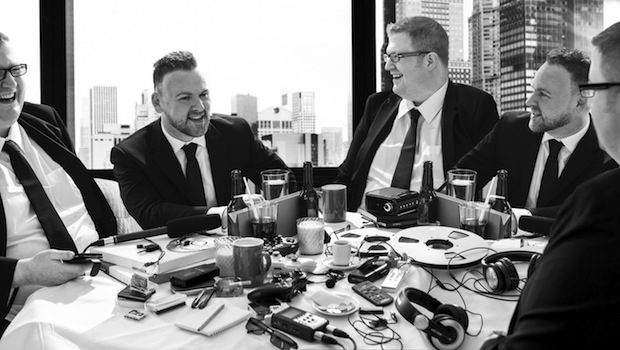
Will Morton:
- Dual monitor setup for stereo work which I alternate when mixing, with a pair of Dynaudio Airs, which are wonderful and a pair of Wharfedale Diamond Hi-Fi speakers. It’s always better to check on different set-ups to get the mix sounding polished on consumer gear as well as higher-end monitors.
- Surround monitoring is based around a set of Tannoys – I used Tannoys at college and fell in love.
- Dual monitor screens, top screen with video preview, mixer controls, plugins, etc. and bottom screen with the main Reaper window.
- 4TB hard drive permanently connected with my sample library and USB hub for dongles (seems a waste, but is a must).
- ADR Vocal Booth – Sennheiser MK4 almost permanently connected, it’s just a fantastic all-rounder for dialogue recording. A mountain of other mics I use for studio and field recording: from classics like the Shure SM58through Rode NTG2 etc., always in even numbers so I can do stereo micing.
- For music I’m generally more of a ‘step-entry with a qwerty keyboard’ type of guy, but having MIDI controllers at hand is always useful – after all the only way to capture performance is to perform – M-Audio semi-weighted full size keyboard, Novation Launchpad and an Akai MPK Mini keyboard on a sliding shelf under my computer keyboard; Korg Nanokey that I take out and about with a laptop because it is so slim.
- Box in the corner holding mic stands when out of use, but ready to grab at a moment’s notice and shelves with boxes and bags of field recording gear (blimps, adapters, recorders, batteries, cables, mics, backup gear, etc). It’s all packed ready for use so whether it’s a big or small recording job I can pretty much pick up what I need and leave the studio with no preparation.
To read the full interviews, head over to the Pro Sound Effects Blog, here.



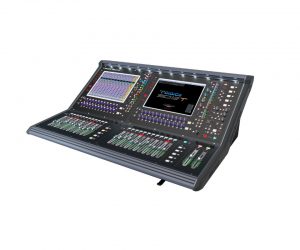












RESPONSES